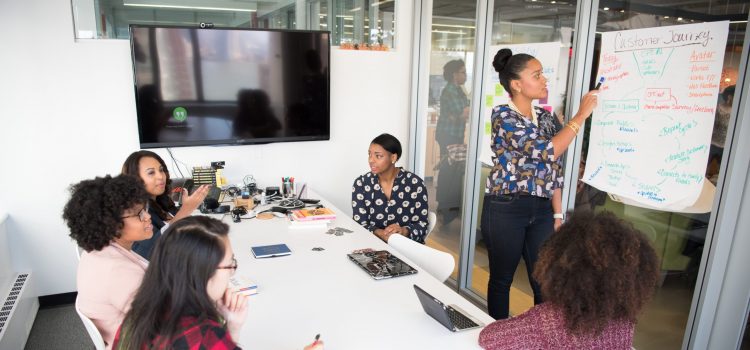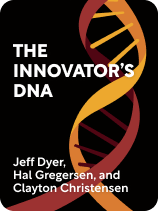

This article is an excerpt from the Shortform book guide to "The Innovator’s DNA" by Jeff Dyer, Hal Gregersen, and Clayton Christensen. Shortform has the world's best summaries and analyses of books you should be reading.
Like this article? Sign up for a free trial here.
How can the five Discovery Skills make you a disruptive innovator? Is it necessary to master all five? What’s the most important one?
Creative thinking is crucial to innovation. The authors of The Innovator’s DNA describe five behaviors and skills—what they call “Discovery Skills”—that are most likely to generate creative ideas. These are associative thinking, questioning, observing, idea networking, and experimenting.
Keep reading to learn the five Discovery Skills, a couple of important considerations about them, and tips for practicing each one.
The 5 Discovery Skills
The authors say that associative thinking is the most critical skill for innovation and that questioning, observing, idea networking, and experimenting feed into this ability.
The authors emphasize two points about the five Discovery Skills:
- You don’t need to master all five skills equally to be a successful innovator. Their research showed innovators did not equally excel in all five Discovery Skills but showed strength in an average of two skills. To get the most out of your effort and time, figure out which two skills you have a natural strength in and prioritize developing those.
- To get the most out of these skills and optimize your creative output, don’t focus solely on two skills. Instead, try to engage with all five to some degree, as they all support and build on one another.
(Shortform note: Focusing your time and effort on improving your natural abilities is an approach echoed by Tom Rath in StrengthsFinder 2.0. Rath takes this idea even further, saying that no matter what you’re doing in life, you should focus on building upon strengths rather than trying to eradicate your natural weaknesses. He explains that it’s not possible to overcome every weakness, no matter how much effort you put into it. The cost in time and energy isn’t worth the small improvements you’re likely to make. Additionally, unlike the authors, Rath doesn’t assert that you should engage with skills other than the ones you’re innately good at.)
Now we’ll describe each of the five Discovery Skills and show how you can enhance them to be more innovative.
#1: Associative Thinking
The authors argue that the core of creative thinking is associative thinking—drawing connections between seemingly unrelated things (questions, problems, concepts, and so on). Creative innovation rarely entails coming up with a completely novel idea. It’s more often about taking existing ideas and associating them with each other in new ways.
Techniques for practicing association skills:
- Let your mind wander.
- Challenge your brain to associate. Practice making connections between things that may seem unrelated at first glance.
#2: Questioning
Asking questions improves your associative thinking by helping you gather crucial information about the status quo and then imagining new connections, possibilities, and directions for radical change. The authors recommend two techniques for practicing questioning skills.
First, ask four types of questions that will help you challenge the status quo:
- Defining Questions: These help you define and describe the current status of products, services, and processes. By understanding what is, you can imagine what could be.
- Origin Questions: These help you discover the real problem with a current product, service, or process and how it got to be what it is today.
- Limit-Testing Questions: These help you explore possibilities for improvement or ways to disrupt the status quo.
- Imagination Questions: These questions allow you to perform thought experiments by imagining things differently.
The second technique is to brainstorm for questions (an activity the authors call QuestionStorming). This exercise will strengthen your questioning skills and provoke deeper inquiries about the root causes or core elements of a problem. QuestionStorming involves coming up with a least 50 questions about the identified problem and then attempting to answer them only after you’ve listed and prioritized them.
#3: Observing
By carefully observing current products, services, and business processes, innovators discover what works, what doesn’t, and where an innovative solution may be needed. Observing this way can spark new questions and allow you to think associatively. Keep an eye out for what the authors call workarounds, the observation of which presents an opportunity for you to replace an established product or service with a new and innovative product or service.
Techniques for building observation skills:
- Observe in new and unusual environments.
- Observe with all of your senses.
- Study other companies.
#4: Idea Networking
The authors introduce the concept of networking for ideas, which means interacting with people you have little in common with as a way to generate and test new ideas. The authors assert that mingling and talking with people from radically different backgrounds, industries, and life experiences increases your ability to think associatively and creatively by expanding your worldview.
Techniques for building your idea network:
- Diversify your contacts.
- Follow your curiosity.
- Make plans to network.
#5: Experimenting
when innovators take things apart and test their ideas with prototypes and pilot projects, they discover new possibilities for products and services. In essence, experimenting is searching for answers to your Defining Questions—it’s best for gathering data about ideas that might work in the future.
Techniques for experimenting with business ideas:
- Keep an open mind.
- Take things apart.
- Experiment with ideas by building prototypes.
- Test your ideas with pilot projects.

———End of Preview———
Like what you just read? Read the rest of the world's best book summary and analysis of Jeff Dyer, Hal Gregersen, and Clayton Christensen's "The Innovator’s DNA" at Shortform.
Here's what you'll find in our full The Innovator’s DNA summary:
- The five key skills that are shared by the world's innovation leaders
- Why innovation in business is so important
- How to sustain innovative organizations and teams long term






